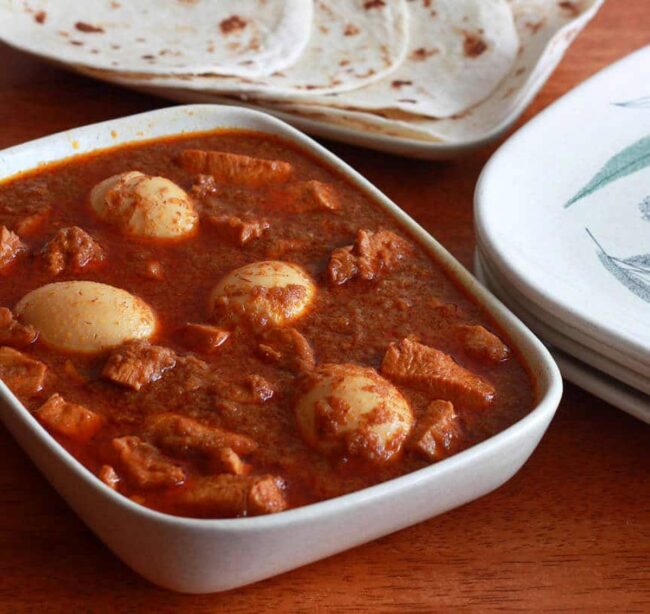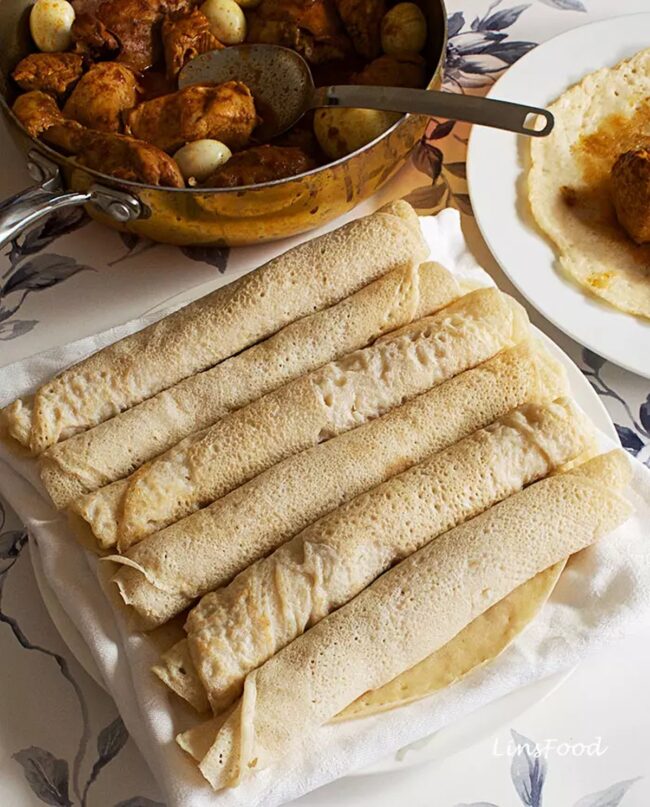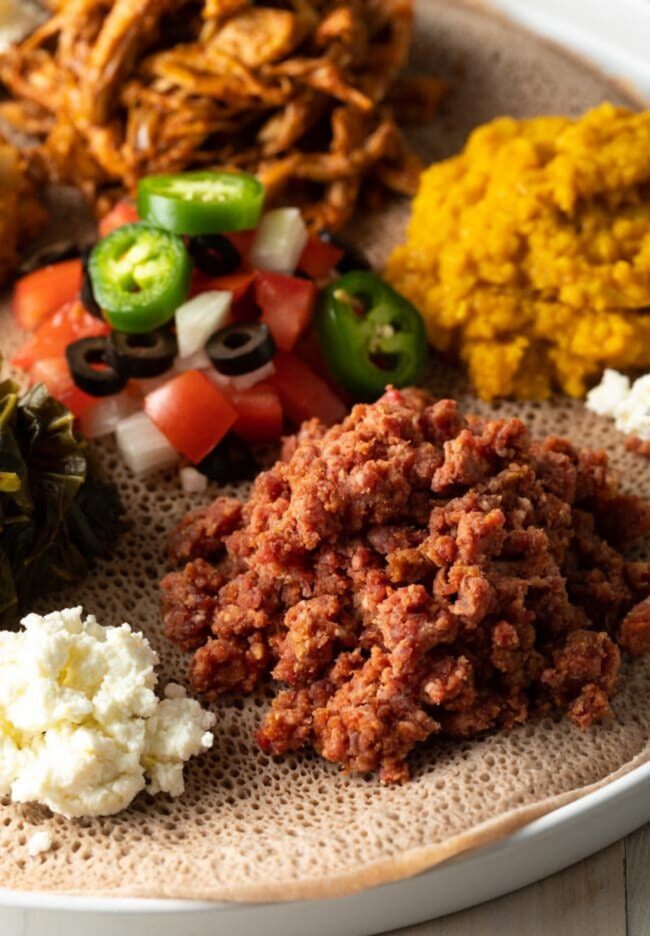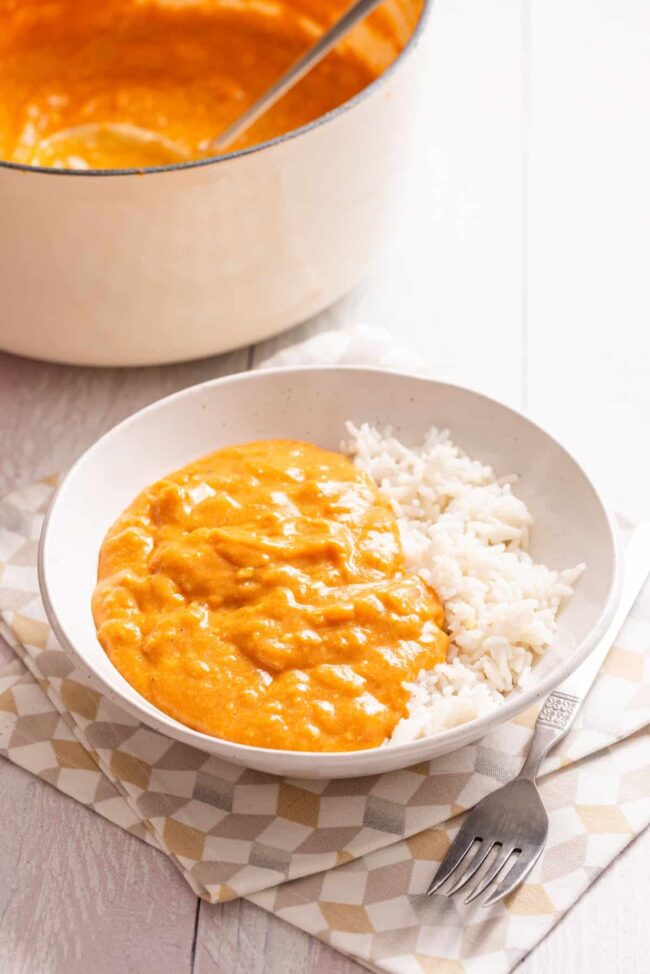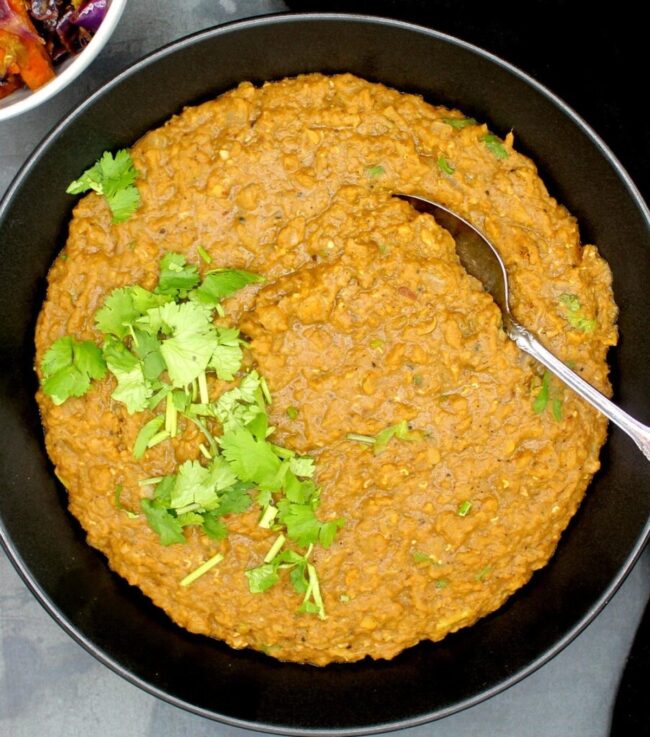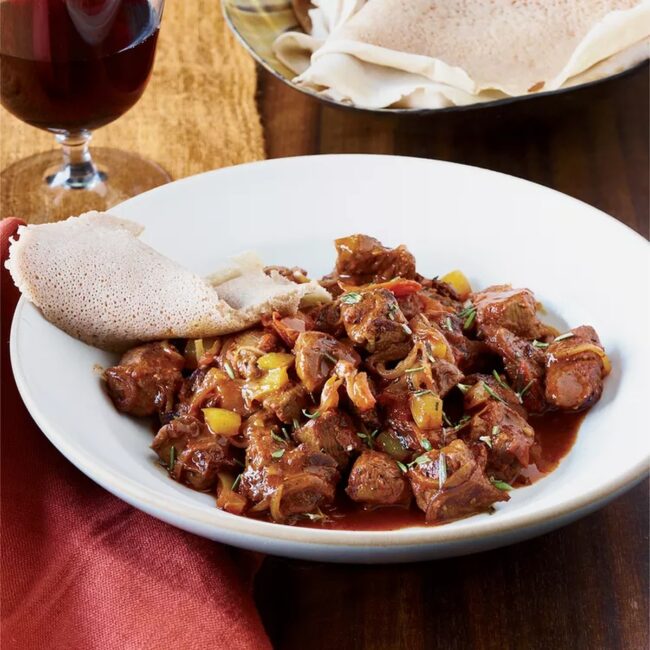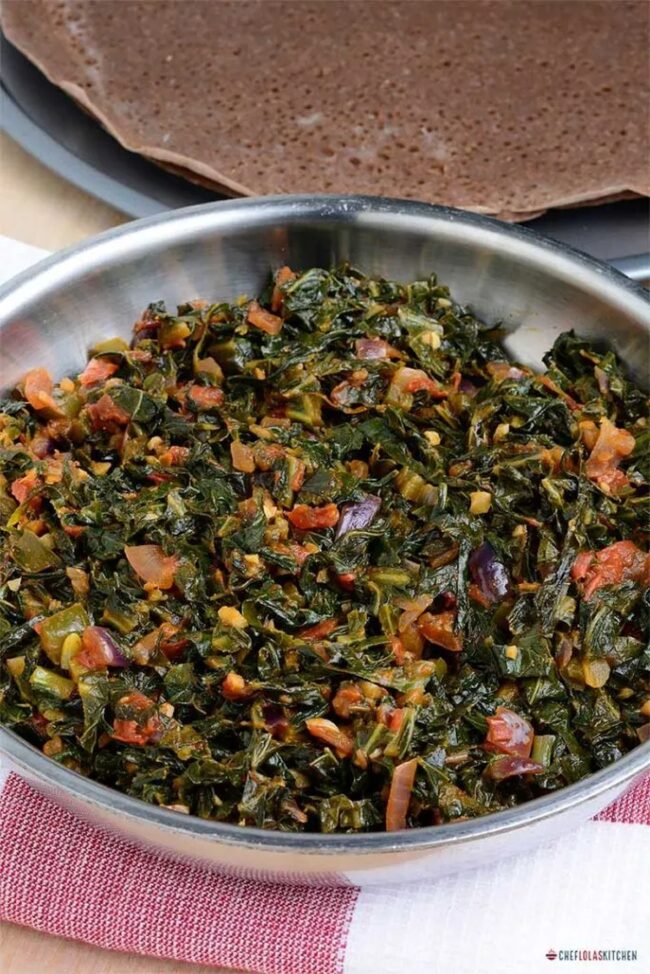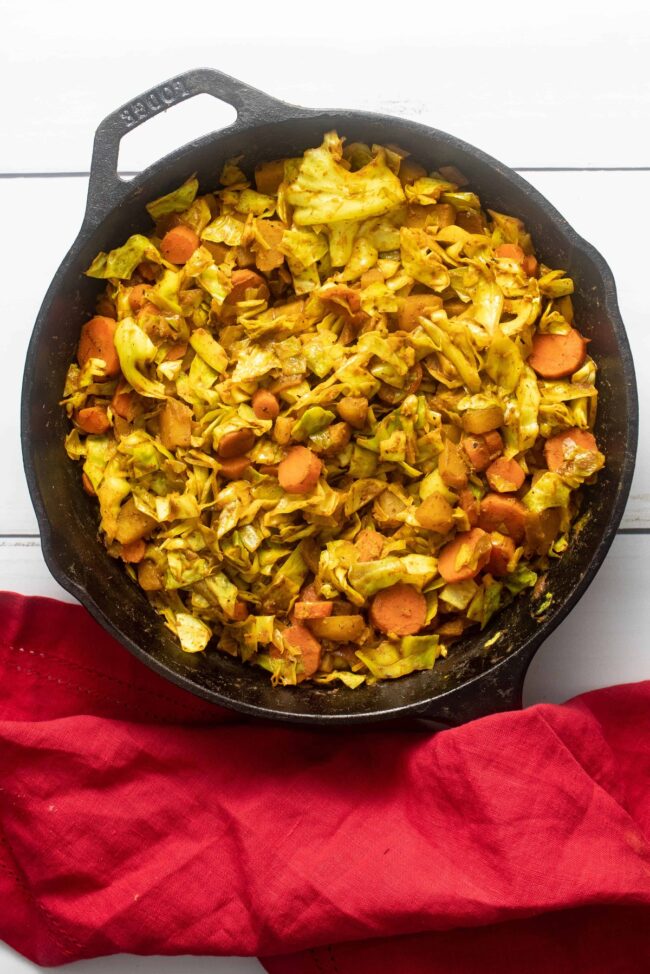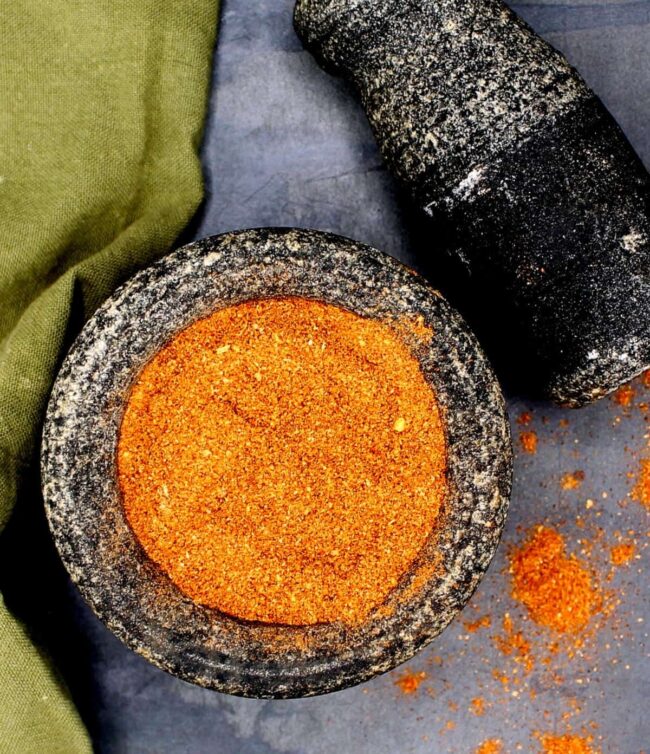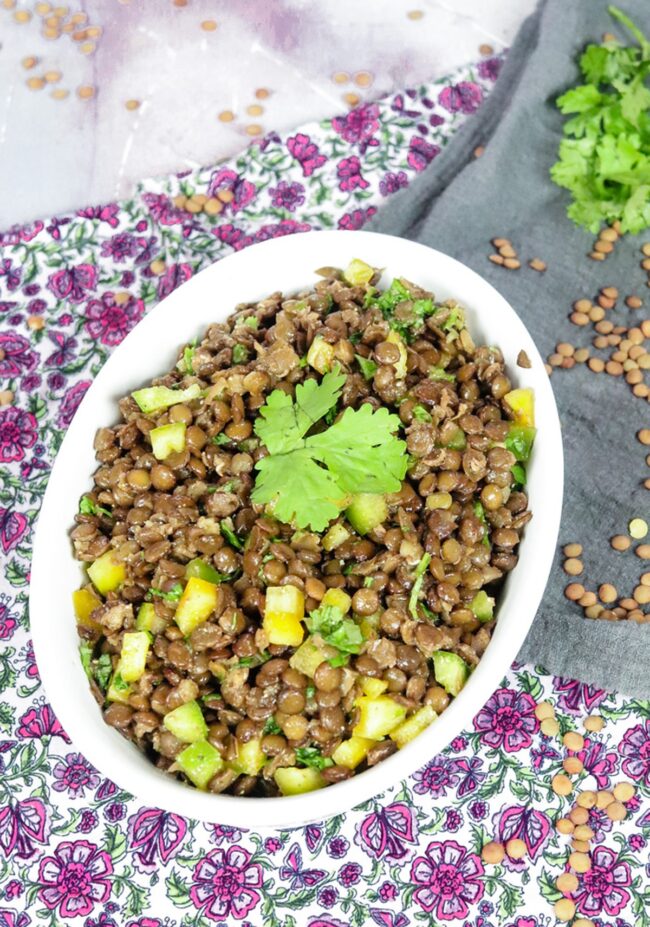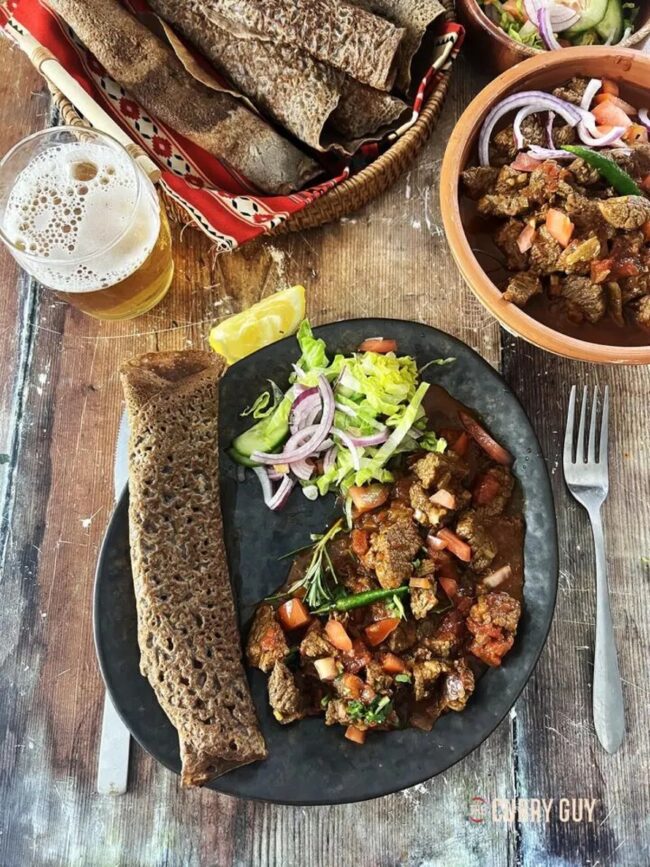15 Delicious Ethiopian Food to Try
Ethiopian dishes are bursting with vibrant spices, bold flavors, and hearty textures that make every meal unforgettable.
Injera, lentils, and richly seasoned meats often come together to create a shared dining experience.
Each dish reflects a deep culinary tradition that’s exciting to explore and enjoy.
Preparing Ethiopian food brings new flavors and techniques to your kitchen.
15 Bold Ethiopian Food Delights
Ethiopian cuisine showcases bold spices and unique flavors in every bite. Traditional injera and hearty stews create a rich dining experience. Check out these recipes for more information.
Doro Wot
Doro Wot stands as a beloved Ethiopian chicken stew, known for its rich and spicy flavor.
This dish shines at celebrations and gatherings, making it a true highlight of any meal.
Key ingredients include chicken, onions, and the essential berbere spice mix.
Onions are first cooked until they become soft and golden brown; then the berbere is mixed in to enhance the taste.
Adding tender chicken follows next, simmering until fully cooked through; hard-boiled eggs often find their way in towards the end for added depth.
Serving Doro Wot atop injera introduces a delightful texture that complements its robust flavors wonderfully while bringing an authentic taste of Ethiopia to your table.
Injera
Ethiopian cuisine features injera as a fundamental flatbread, commonly served with various dishes.
This flexible and tangy bread serves both as a base for meals and an eating utensil.
Teff flour, derived from a small grain native to Ethiopia, creates its distinctive flavor and texture while offering rich nutrients.
Traditional preparation involves several days of fermentation; however, quicker methods using sourdough starter or yeast are available for home cooks.
Mixing teff flour with water allows it to ferment before cooking the batter on a hot griddle like an oversized pancake.
The bubbles that form during cooking give injera its spongy quality, enhancing the experience of enjoying flavorful stews and sauces alongside it.
Kitfo
Serving kitfo can be done in two ways: raw, known as tire, or lightly cooked, called leb leb.
This Ethiopian favorite features minced beef mixed with niter kibbeh and mitmita for a rich flavor.
Freshly ground spices like cardamom enhance its taste significantly.
High-quality beef is essential; trimming the fat and chopping it finely ensures the best texture.
Traditionally paired with injera, this dish also goes well alongside ayib, a mild cheese that complements its spices perfectly.
Enjoying kitfo allows for a unique culinary experience rooted in Ethiopian culture and tradition.
Shiro
Shiro is an Ethiopian stew that features ground chickpeas as its main ingredient.
A rich flavor comes from seasoning it with berbere spice, which can be adjusted to suit personal taste.
The preparation starts by sautéing onions, garlic, and tomatoes in a pot for a flavorful base.
Gradually whisk in water with chickpea flour while stirring continuously to keep the mixture smooth and thick.
Once cooked to a creamy texture, serving shiro hot alongside injera bread completes this traditional meal.
This dish provides plenty of protein and is great for those following vegetarian or vegan diets.
Misir Wot
Serving Misir Wot hot alongside injera bread creates an authentic Ethiopian experience.
This hearty stew features red lentils, making it a protein-rich choice for those who follow vegetarian and vegan diets.
Diced onions cook until soft, releasing their natural sweetness in the pot.
Garlic, ginger, and berbere spice blend add a unique flavor profile that defines this dish.
Stirring in diced tomatoes along with water allows the lentils to soften as they simmer into a thick and creamy texture.
Preparing this flavorful red lentil stew at home requires just a few key ingredients and simple steps.
Kik Alicha
Kik Alicha offers a warm experience with its soothing blend of yellow split peas.
This Ethiopian stew begins by soaking the peas overnight for better texture.
Cooking onions, garlic, and ginger in oil creates a fragrant base before adding turmeric for vibrant color.
Once the mixture is ready, drained split peas and water get stirred in to simmer gently until tender.
A sprinkle of salt and pepper enhances the taste, while niter kibbeh can add an extra layer of richness if desired.
Enjoying this dish alongside injera bread makes for a hearty meal that warms up even the coldest days.
Awaze
A fiery Ethiopian sauce known as awaze elevates many dishes with its rich flavor.
This sauce pairs exceptionally well with meat, especially beef tibs, enhancing their taste.
The preparation involves blending berbere and mitmita spice mixes along with a few other ingredients for a robust result.
Combining berbere, mitmita, salt, melted niter kibbeh, and Ethiopian mead (t’edj) in a mortar creates a smooth paste after grinding them together.
Versatile in use, awaze serves as both marinade and dipping sauce for an extra kick in meals inspired by Ethiopia.
Its unique blend of spices guarantees an exciting culinary experience that leaves an impression on the palate.
Gomen
This Ethiopian dish, known as gomen, features delicious collard greens.
A vibrant combination of sautéed onions in spiced butter or oil creates a flavorful base.
Adding garlic, ginger, and spices such as cumin and cardamom enhances its richness.
Once the collards are mixed in and cooked until they turn bright green yet remain slightly crunchy, the dish is ready to enjoy.
Gomen complements other Ethiopian dishes perfectly when served with injera flatbread for an authentic experience or stands alone as a healthy vegetarian option.
Its taste offers a delightful balance that many appreciate during mealtime gatherings.
Atakilt Wot
Atakilt Wot offers a delicious combination of cabbage, carrots, and potatoes.
This Ethiopian vegetable dish shines with its rich flavors and healthy ingredients.
Starting with oil in a pan, onions are cooked until they become clear.
Garlic, ginger, turmeric, and cumin join the mix to create an aromatic base for the vegetables.
Cabbage, carrots, and potatoes then enter the pan; stirring continues until they soften without losing their shape.
Serving Atakilt Wot hot pairs beautifully with rice or injera for a satisfying meal experience.
Chechebsa
A delightful Ethiopian breakfast dish, chechebsa originates from the Oromia region.
This meal features torn flatbread mixed with spiced butter, creating a satisfying start to the day.
Begin by cooking a thin flatbread known as kita on a hot griddle until it turns golden brown.
After cooling slightly, tear this bread into small pieces and toss them in melted spiced butter combined with berbere for that traditional kick of flavor.
For an extra touch of sweetness, serve it alongside yogurt or honey; adding scrambled eggs can boost its protein content too.
Enjoying chechebsa provides lasting energy for all morning activities.
Genfo
Starting the day with genfo offers a hearty and satisfying breakfast.
This Ethiopian porridge requires just barley flour and water.
Water boils in a pot, then the flour mixes in gradually, creating a smooth texture.
Once cooked, form it into a mound within a bowl and create an indentation at the top for spiced clarified butter.
Adding berbere or mitmita spice enhances its rich flavor profile beautifully.
Served hot, small pieces of genfo dipped in that butter make for an enjoyable meal that fills you up nicely.
Fitfit
Variations of fitfit introduce sunflower seeds or flaxseed, adding a distinct twist to the traditional recipe.
This Ethiopian dish showcases crumbled injera, a staple flatbread that forms the base of the meal.
To prepare fitfit, tear injera into small pieces and mix it with spices and other ingredients for flavor.
The berbere spice blend is essential for achieving its unique taste.
Melting butter in a pan before adding the crumbled injera allows it to warm up while soaking in those rich spices.
For an extra kick, consider incorporating diced onions and jalapeños into your dish for added texture and zest.
Berbere
Ethiopian cuisine shines brightly with berbere, a crucial spice blend.
This mix includes various spices such as chili peppers, fenugreek, and paprika.
Flavor enhancement in dishes happens effortlessly with berbere; it pairs beautifully with chicken, beef, lentils, and vegetables.
Creating this blend at home involves toasting whole spices like coriander and fenugreek before grinding them together with other ground spices.
Adjusting the heat level is simple; start small if unfamiliar with berbere's bold taste.
Gradually increase the amount of chili peppers as comfort grows with its rich flavor profile.
Azifa
A light meal or side dish, azifa is an Ethiopian lentil salad that shines with its refreshing flavors.
Start by cooking green lentils until they become tender.
Once cooled and drained, combine them with finely chopped onions, jalapeños, tomatoes, and minced garlic for a flavor boost.
The dressing plays a crucial role; whisk lime juice, olive oil, and mustard together before pouring it over the lentil mixture.
Allowing the salad to chill enhances its taste as the ingredients mingle beautifully.
Simple preparation makes this dish both appealing and satisfying for any occasion.
Tibs
Ethiopian cuisine features tibs, a dish loved for its rich flavors and hearty ingredients.
This meal can be prepared with beef, lamb, or goat.
Small cubes of meat are combined with onions, peppers, and various spices to create a satisfying experience.
To cook tibs properly, oil is heated in a pan before adding the meat until it turns golden brown.
The addition of garlic and berbere spice elevates the taste further; some variations even include tomatoes or rosemary for an extra kick.
Serving this dish hot alongside injera bread or rice makes it an inviting choice for any occasion.
Ethiopian Cuisine Key Staples
Ethiopian cuisine relies on staple ingredients rich in flavor and nutrition. These foods have deep cultural significance.
Herb & Spice Blends
Niter kibbeh serves as a flavorful spiced butter that enhances various dishes.
Made by simmering butter with spices such as fenugreek, cumin, and turmeric, it adds a rich taste to meals.
Korarima brings its distinctive flavor to spice blends and coffee, enriching traditional recipes with its unique essence.
Mitmita stands out for its spicy kick from African bird’s eye chili peppers mixed with cardamom and cloves; cooks often use it in meat dishes or at the table for extra zest.
Berbere plays a crucial role in Ethiopian cooking; this vibrant blend of chili peppers, garlic, ginger, basil, and more delivers heat and depth to many culinary creations.
Grains & Legumes Guide
Chickpeas play a significant role in Ethiopian cuisine.
They serve as the base for shiro, a thick paste made from ground chickpeas and spices.
Lentils also hold an important place, especially red lentils in misir wat, which is a spicy stew enjoyed by many.
Brown lentils appear frequently in various dishes as well.
Teff stands out as the key ingredient for injera, the traditional flatbread that accompanies most meals and is both gluten-free and rich in protein and fiber.
Barley contributes to several classic recipes too; it forms the backbone of tella, a homemade beer, and genfo, a hearty porridge that nourishes many locals.
Meat & Veggie Pairings
Ethiopian cuisine features a rich variety of meats, with beef being especially favored.
Doro wat, a spicy chicken stew, holds the title of Ethiopia’s national dish and includes berbere spice along with hard-boiled eggs.
Lamb and goat also play significant roles in traditional recipes.
Onions and tomatoes serve as the foundation for many stews, simmered down into a thick sauce bursting with flavor.
A blend of garlic and ginger enhances most dishes by providing depth and inviting aromas.
Collard greens shine in gomen, where they are seasoned to perfection alongside various spices.
Classic Cooking Methods Here
Classic cooking methods help bring out the best in ingredients. Simple techniques create rich and flavorful meals.
Slow Cook Techniques
Ethiopian cuisine relies heavily on slow cooking to enhance flavors.
Dishes simmer for hours, allowing ingredients to meld beautifully.
Meat stews like doro wat become incredibly tender, with the meat easily falling off the bone after a long cook.
Lentils and beans also thrive when cooked gently over time, as this method lets spices deepen their impact.
Traditional clay pots known as inseras are commonly used for this purpose; they ensure even cooking and moisture retention.
At home, a sturdy pot or Dutch oven can yield similar results by starting on low heat and letting the dish bubble slowly while stirring now and then to avoid sticking.
Stewing & Simmering
Ethiopian cuisine often features stewing and simmering techniques.
These methods are great for tougher cuts of meat and sturdy vegetables, allowing dishes like misir wat (red lentil stew) and alicha (vegetable stew) to shine.
For stewing, the process begins by browning meat or sautéing vegetables before adding liquid to the pot.
This slow cooking method lets food absorb flavors while becoming tender.
Simmering differs from boiling as it requires lower heat and less liquid.
This technique suits delicate ingredients such as fish or quick-cooking veggies, ensuring they become tender without losing their texture.

